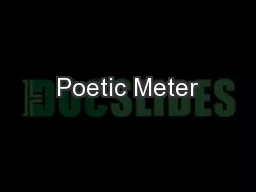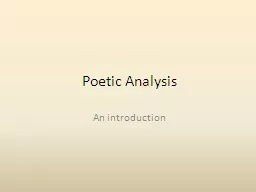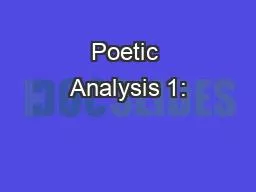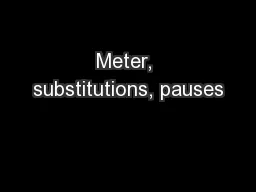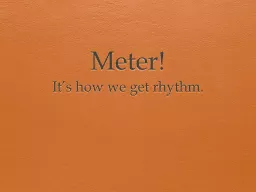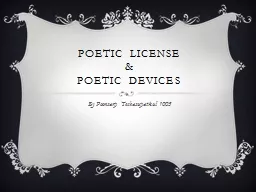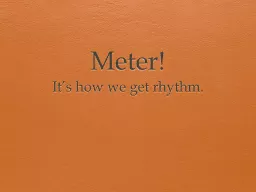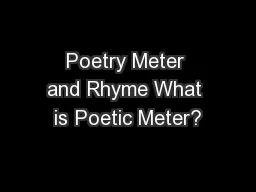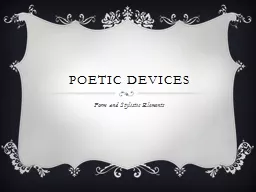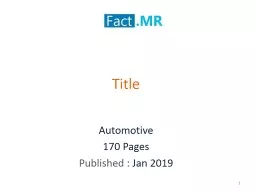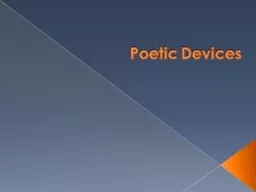PPT-Poetic Meter
Author : celsa-spraggs | Published Date : 2017-04-07
Meter is the rhythm of a poem There are specific ways to analyze meter so that we can say something clear about a poems rhythmic pattern Lets Look At a Poem To scan
Presentation Embed Code
Download Presentation
Download Presentation The PPT/PDF document "Poetic Meter" is the property of its rightful owner. Permission is granted to download and print the materials on this website for personal, non-commercial use only, and to display it on your personal computer provided you do not modify the materials and that you retain all copyright notices contained in the materials. By downloading content from our website, you accept the terms of this agreement.
Poetic Meter: Transcript
Download Rules Of Document
"Poetic Meter"The content belongs to its owner. You may download and print it for personal use, without modification, and keep all copyright notices. By downloading, you agree to these terms.
Related Documents

